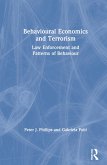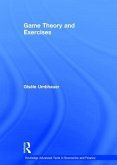The key unifying conceptual tool of this important entry in the study of efficiency and productivity is the directional distance function. In New Directions the authors take up this new performance measure while also maintaining their "traditional" axiomatic production theoretic approach.
The directional distance function includes traditional distance functions and efficiency measures as special cases providing a unifying framework for existing productivity and efficiency measures. As a generalisation of the traditional distance functions, it turns out to be a dual to the profit function, opening a range of new tools for empirical and theoretical research. It also provides enough additional flexibility to open up new areas in productivity and efficiency analysis such as environmental and aggregation issues.
The format of this monograph is three essays, which we arrived at after spending a year writing over one hundred pages of what we even tually realized was a tedious reworking of old material. So we started over determined to write something new. At first we thought this approach might not work as a coherent mono graph, which is why we chose the essay format rather than chapters. As it turns out, there is a common thread-namely the directional distance function, which also gave us our title. As you shall see, the directional distance function includes traditional distance functions and efficiency measures as special cases providing a unifying framework for existing productivity and efficiency measures. It is also flexible enough to open up new areas in productivity and efficiency analysis such as environmen tal and aggregation issues. That we did not see this earlier is humbling; a student at a recent conference raised his hand and asked 'Why didn't you start with the directional distance function in the first place? In deed. This manuscript is intended to make up for our earlier oversights. This monograph contains papers coauthored with Wen-Fu Lee and Osman Zaim and one paper written by two former students, Hiroyuki Fukuyama and Bill Weber. We thank them for their contributions. An other former student, Jim Logan (Logi) read and critiqued the manu script for which we are grateful.
The directional distance function includes traditional distance functions and efficiency measures as special cases providing a unifying framework for existing productivity and efficiency measures. As a generalisation of the traditional distance functions, it turns out to be a dual to the profit function, opening a range of new tools for empirical and theoretical research. It also provides enough additional flexibility to open up new areas in productivity and efficiency analysis such as environmental and aggregation issues.
The format of this monograph is three essays, which we arrived at after spending a year writing over one hundred pages of what we even tually realized was a tedious reworking of old material. So we started over determined to write something new. At first we thought this approach might not work as a coherent mono graph, which is why we chose the essay format rather than chapters. As it turns out, there is a common thread-namely the directional distance function, which also gave us our title. As you shall see, the directional distance function includes traditional distance functions and efficiency measures as special cases providing a unifying framework for existing productivity and efficiency measures. It is also flexible enough to open up new areas in productivity and efficiency analysis such as environmen tal and aggregation issues. That we did not see this earlier is humbling; a student at a recent conference raised his hand and asked 'Why didn't you start with the directional distance function in the first place? In deed. This manuscript is intended to make up for our earlier oversights. This monograph contains papers coauthored with Wen-Fu Lee and Osman Zaim and one paper written by two former students, Hiroyuki Fukuyama and Bill Weber. We thank them for their contributions. An other former student, Jim Logan (Logi) read and critiqued the manu script for which we are grateful.








